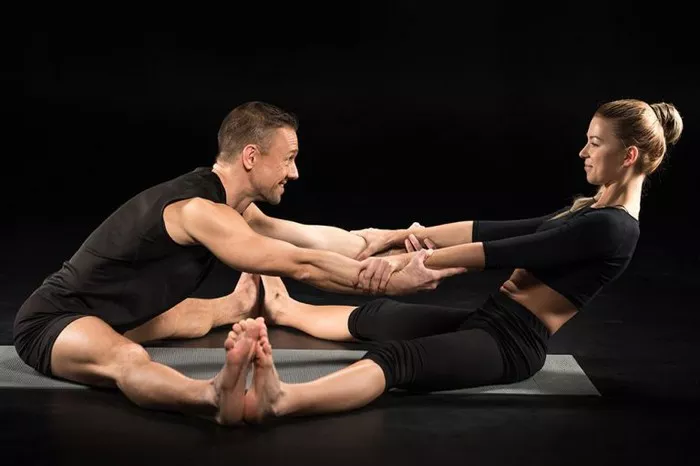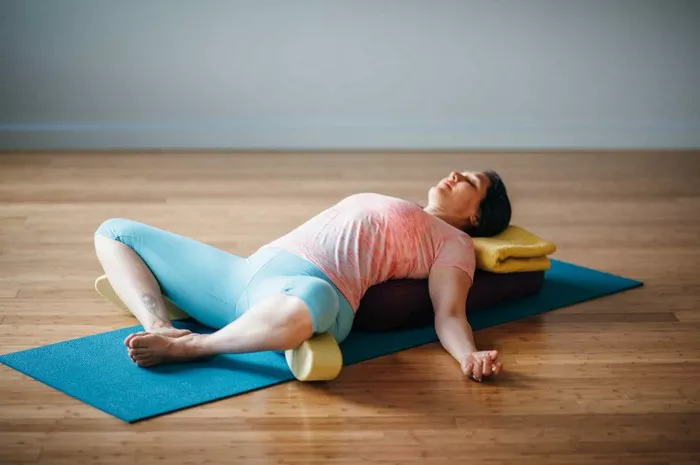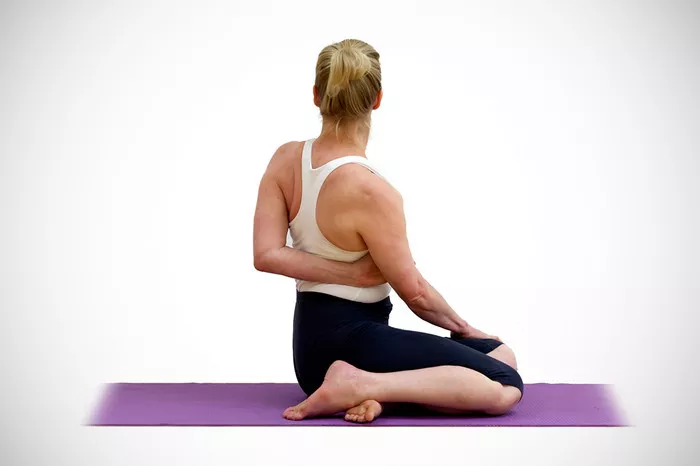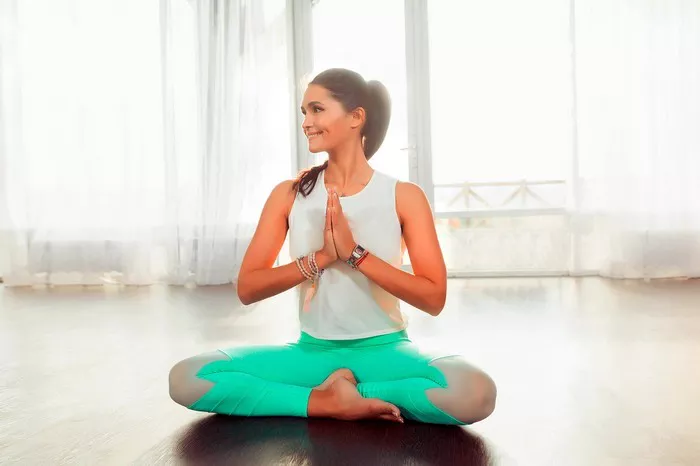Kundalini Yoga is one of the most powerful forms of yoga, designed to awaken and elevate your consciousness. It combines movement, breathing techniques, chanting, and meditation, all aimed at releasing the dormant energy within your body. Whether you’re a complete beginner or someone looking to deepen your yoga practice, learning how to do Kundalini Yoga can be a transformative experience. In this article, we will guide you through the fundamentals of Kundalini Yoga, its benefits, and how to incorporate it into your practice.
What is Kundalini Yoga?
Kundalini Yoga is a spiritual and physical discipline that originated in ancient India. The word “Kundalini” refers to the dormant energy that lies coiled at the base of the spine. This energy, once awakened, travels upward through the chakras (energy centers in the body), leading to spiritual awakening and self-realization.
Kundalini Yoga is often called the “Yoga of Awareness” because it aims to raise your awareness of your higher self and the universe around you. Through a combination of postures, breathwork (pranayama), chanting (mantras), and meditation, Kundalini Yoga works to bring balance and harmony to the mind, body, and spirit.
The Key Components of Kundalini Yoga
Kundalini Yoga involves a variety of practices, each designed to awaken and energize different aspects of the body and mind. The key components of a typical Kundalini Yoga session include:
Kriyas: A Kriya is a specific set of movements, breathwork, and mantras designed to produce a particular effect. Each Kriya targets different areas of the body and mind, and some Kriyas are intended to release blocked energy, while others promote healing or enhance spiritual awareness.
Pranayama (Breathing Techniques): In Kundalini Yoga, the breath is seen as the link between the mind and body. Various pranayama techniques, such as alternate nostril breathing (Nadi Shodhana) and Breath of Fire (a rapid, rhythmic breathing pattern), are used to energize the body, clear the mind, and activate the Kundalini energy.
Asanas (Postures): Kundalini Yoga incorporates a variety of physical postures or asanas that are often more dynamic and fluid compared to other forms of yoga. These postures can range from simple stretches to more challenging movements that involve core strength, balance, and flexibility.
Mantras and Chanting: Chanting is an essential aspect of Kundalini Yoga, as it is believed to help align your vibration with the universal energy. The repetition of mantras such as “Sat Nam” (which translates to “Truth is my identity”) helps to center the mind and activate the energy centers of the body.
Meditation: Meditation in Kundalini Yoga is used to quiet the mind, improve concentration, and increase spiritual awareness. Techniques such as focused concentration, visualization, and mantra repetition are often employed in this practice.
Mudras (Hand Gestures): Mudras are symbolic hand gestures used in many Kundalini practices. These gestures can help channel energy throughout the body and activate specific energetic pathways.
The Benefits of Kundalini Yoga
Practicing Kundalini Yoga regularly can have profound effects on your physical, mental, and spiritual well-being. Here are some of the key benefits:
Increased Energy and Vitality: Kundalini Yoga is designed to awaken your inner energy and promote the free flow of prana (life force) throughout the body. This can lead to increased energy, stamina, and vitality.
Enhanced Spiritual Awareness: One of the core aims of Kundalini Yoga is to awaken your higher consciousness and deepen your connection to your inner self. Through meditation and the awakening of Kundalini energy, practitioners can experience a greater sense of spiritual clarity, peace, and purpose.
Emotional Healing and Balance: Kundalini Yoga can help release emotional blockages and traumas, leading to emotional healing and a greater sense of balance. The practice encourages mindfulness and emotional awareness, helping practitioners process and release negative emotions.
Improved Mental Clarity: Regular practice of Kundalini Yoga can help clear mental fog, reduce stress, and improve focus and concentration. The combination of breathwork, movement, and meditation creates a calm, centered mind, allowing for enhanced cognitive functioning.
Physical Health: The physical postures and breathing techniques used in Kundalini Yoga can improve flexibility, strength, and balance. It also helps to detoxify the body, enhance circulation, and support the functioning of the nervous system.
Stress Reduction: Kundalini Yoga is an excellent practice for managing stress and anxiety. The use of deep breathing, meditation, and body movement helps activate the parasympathetic nervous system, which promotes relaxation and reduces the body’s stress response.
Awakening Creativity: Kundalini Yoga encourages the free flow of energy throughout the body, which can help unlock creative potential. Many practitioners report increased inspiration and a greater sense of creative expression after practicing Kundalini Yoga.
How to Do Kundalini Yoga: A Step-by-Step Guide for Beginners
Now that you understand the basic components and benefits of Kundalini Yoga, let’s go over a step-by-step guide on how to begin your practice.
1. Prepare Your Space
Find a quiet, comfortable space where you can practice without distractions. Ideally, you should have a clean and calm environment with enough space to move freely. You may want to light candles or incense to create a peaceful atmosphere. Have a yoga mat, a blanket, and any props you may need for your practice.
2. Set Your Intention
Before you begin, take a moment to set an intention for your practice. This could be something personal, such as cultivating inner peace or healing an emotional wound, or it could be more general, like connecting with your higher self. Setting an intention helps focus your mind and aligns your practice with your goals.
3. Warm Up with Gentle Movement
Start by warming up your body with gentle stretches to release any tension and prepare for the more intense movements. Simple stretches such as Cat-Cow, Child’s Pose, and forward folds are great for loosening up the body. You can also do gentle spinal rotations to awaken the energy within your spine.
4. Begin with a Kriya
A Kriya is a powerful sequence of postures, breathing techniques, and mantras that form the foundation of a Kundalini Yoga practice. As a beginner, you can start with a simple Kriya such as the “Kundalini Awakening Kriya” or “Kriya for the Spine.” These Kriyas are designed to activate the Kundalini energy and promote overall well-being.
For example, you could practice the following Kriya:
Breath of Fire (3-5 minutes): Sit comfortably with your spine straight. Begin to inhale and exhale rapidly through your nose, using your diaphragm to pump the breath. Keep the rhythm steady and fast, and focus on the sensation of energy moving through your body.
Spinal Flex (1-3 minutes): Sit with your legs crossed and place your hands on your knees. Inhale as you arch your back, and exhale as you round your spine. Continue this movement, keeping your breath synchronized with your spine’s motion.
Sat Nam Chanting (5-10 minutes): Sit with a straight spine and close your eyes. Chant “Sat Nam” out loud, focusing on the meaning of the words (Sat = Truth, Nam = Name). Repeat this mantra for several minutes, allowing the vibrations to resonate in your body and mind.
5. Practice Pranayama (Breathing Techniques)
Breathing is a key aspect of Kundalini Yoga, as it helps control the flow of energy in the body. Here are a few breathing techniques you can try:
Alternate Nostril Breathing (Nadi Shodhana): Sit comfortably and use your right thumb to close your right nostril. Inhale through your left nostril, then close it with your right ring finger and exhale through your right nostril. Inhale through the right nostril, then close it and exhale through the left nostril. Continue alternating for 3-5 minutes.
Breath of Fire: This rapid, rhythmic breath is energizing and cleansing. It involves pumping the belly in and out with each exhale while keeping the breath through the nose. Breath of Fire is often practiced during physical postures to increase heat and energy.
6. Incorporate Meditation
End your practice with a meditation to center your mind and deepen your connection to your inner self. You can practice a simple mindfulness meditation, focusing on your breath and observing any thoughts or sensations without judgment.
Another option is to use a mantra, such as “So Hum” (I am that), or “Sat Nam,” to deepen your concentration. Sit comfortably, close your eyes, and repeat the mantra mentally or aloud, focusing on the vibration and energy of the sound.
7. Relaxation and Integration
Finish your practice by lying down in Savasana (Corpse Pose), allowing your body to absorb the effects of the practice. Relax completely and focus on your breath. This is a time for deep integration, where your body and mind can rest and rejuvenate.
Tips for a Successful Kundalini Yoga Practice
Practice Consistently: Like any form of yoga, consistency is key to experiencing the full benefits of Kundalini Yoga. Aim to practice several times a week, even if it’s just for a few minutes each session.
Listen to Your Body: Kundalini Yoga can involve intense energy shifts, so it’s important to listen to your body and practice at your own pace. If a particular posture or breath technique feels uncomfortable, modify it or take a break.
Stay Hydrated: Kundalini Yoga can be physically demanding, so it’s important to drink plenty of water before and after your practice.
Start with a Teacher: If you’re new to Kundalini Yoga, it may be helpful to start with a qualified teacher who can guide you through the practice and offer modifications. You can also find online classes or workshops that provide step-by-step instructions.
Conclusion
Kundalini Yoga is a deeply transformative practice that can awaken your inner energy and lead to profound physical, mental, and spiritual growth. Whether you are looking to enhance your physical health, improve your emotional balance, or deepen your spiritual awareness, Kundalini Yoga offers a powerful tool for personal transformation. By starting with simple Kriyas, breathwork, and meditation, you can gradually tap into the power of this ancient practice and experience its many benefits. Remember, Kundalini Yoga is a journey of self-discovery, and with patience, dedication, and an open mind, you can unlock the full potential of your being.
Related Topics:


























